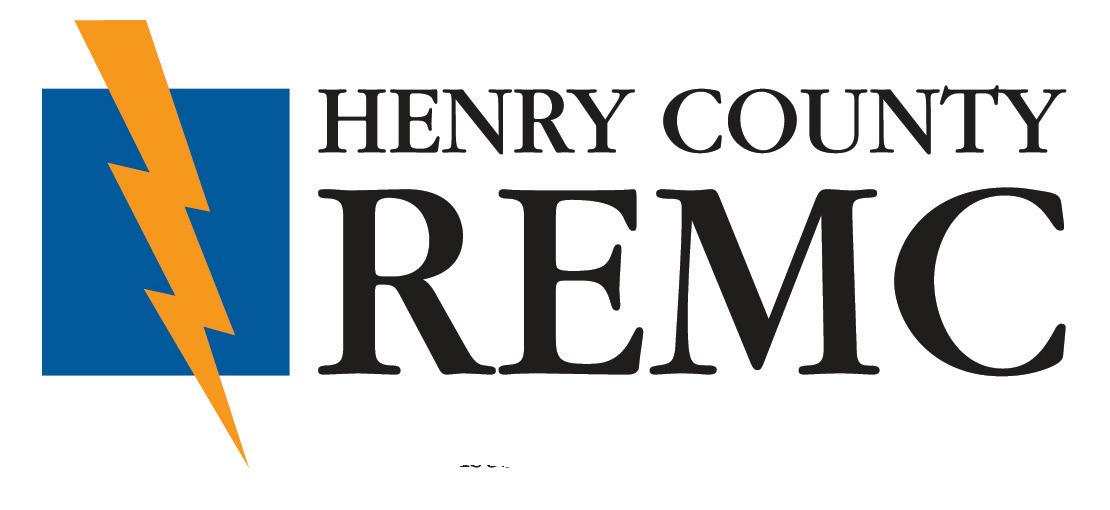Are you the next Henry County REMC board member?
Henry County REMC’s
eSPORTS
A REAL GAME CHANGER


Meet the team: Kiley Lipps
This month it is my pleasure to introduce you to Kiley Lipps, a graphic designer and photographer who is an integral part of our team. Kiley freelanced for Indiana Electric Cooperatives for six years before joining the staff full-time this past June. I asked her to share a little about herself and her work:

My job is split between Indiana Connection and working on the creative and design needs of our member cooperatives. My favorite magazine page is the food spread because I get to take the photos and design the pages. Also, food! The creative projects I work on for the cooperatives vary a lot. I may be doing an annual meeting logo one day and an ad for our youth programs the next. You may also see me around taking photos. I’m grateful this job allows me to work on projects that make people’s lives better, even if in small ways.
Three facts about Kiley:
• I have three cats. I’m known as the cat lady in all my friend groups, and I love it.
• I bought my first house two years ago and have spent many weekends since then making it my own. I enjoy being able to paint everything pink.
• I grew up on the border between Indiana and Ohio in Union City, Indiana. It was normal for me to go to swim practice in Ohio and then dance class in Indiana in the same day, which was even more interesting when we were in different time zones!
Kiley has the ability to make any part of the magazine she touches look fantastic, and a top-notch sense of humor, to boot. I’m so glad she’s a part of this team.
Stephanie Groves Editor sgroves@indianaec.orgWin a pink-themed prize pack ($50 value) to bring a little of Kiley’s current favorite hue into your life!
On the menu: July: Tropical fruit recipes, deadline May 1. August: Recipes for one pot dinners ready in 30 minutes, deadline June 1. If we publish your recipe on our food pages, we’ll send you a $10 gift card.
Giveaway: There are two giveaways this month! Readers can win either a pinkthemed prize pack ($50 value) OR have a chance to win four tickets to the NCAA Hall of Champions. Visit indianaconnection.org/talk-to-us/contests or send your contact information to the address below. The deadline to enter is April 30.
Three ways to contact us: To send us recipes, photos, event listings, letters and entries for gift drawings, please use the forms on our website indianaconnection.org; email info@indianaconnection.org; or send to Indiana Connection, 8888 Keystone Crossing, Suite 1600, Indianapolis, IN 46240-4606.
VOLUME 72 • NUMBER 10
ISSN 0745-4651 • USPS 262-340
Published monthly by Indiana Electric Cooperatives
Indiana Connection is for and about members of Indiana’s locally-owned, not-for-profit electric cooperatives. It helps consumers use electricity safely and efficiently; understand energy issues; connect with their co-op; and celebrate life in Indiana. Over 311,000 residents and businesses receive the magazine as part of their electric co-op membership. Member’s cost per issue is approximately 32 cents, plus postage.
CONTACT US:
8888 Keystone Crossing, Suite 1600 Indianapolis, IN 46240-4606 317-487-2220
info@indianaconnection.org
IndianaConnection.org
INDIANA ELECTRIC COOPERATIVES OFFICERS:
Randy Kleaving President
Steve McMichael Vice President
Dr. Richard Leeper Secretary/Treasurer
John Cassady CEO
EDITORIAL STAFF:
Stephanie Groves Editor
Richard George Biever Senior Editor
Holly Huffman Communication Support Specialist
Lauren Carman Communication Manager
Kiley Lipps Graphic Designer
Ashley Curry Production and Design Coordinator
Amber Knight Creative Manager
Mandy Barth Vice President of Communication
ADVERTISING:
American MainStreet Publications
Cheryl Solomon, local ad representative; 512-441-5200; amp.coop
Crosshair Media 502-216-8537; crosshairmedia.net
Paid advertisements are not endorsements by any electric cooperative or this publication.
UNSOLICITED MATERIAL:
Indiana Connection does not use unsolicited freelance manuscripts or photographs and assumes no responsibility for the safekeeping or return of unsolicited material.
SUBSCRIPTIONS:
$12 for individuals not subscribing through participating REMCs/RECs.
CHANGE OF ADDRESS:
If you receive Indiana Connection through your electric co-op membership, report address changes to your local co-op.
POSTAGE:
Periodicals postage paid at Indianapolis, Indiana, and at additional mailing offices.
POSTMASTER:
Send change of address to: Indiana Connection, 8888 Keystone Crossing, Suite 1600, Indianapolis, IN 46240-4606. Include key number.
No portion of Indiana Connection may be reproduced without permission of the editor.




On the cover



Electronic sports are fast becoming a part of colleges and secondary schools. But they are more than “just video games.” Under faculty advisers, esports reach a mostly untapped group of students to teach the team skills found in traditional sports and build a sense of belonging and school spirit.

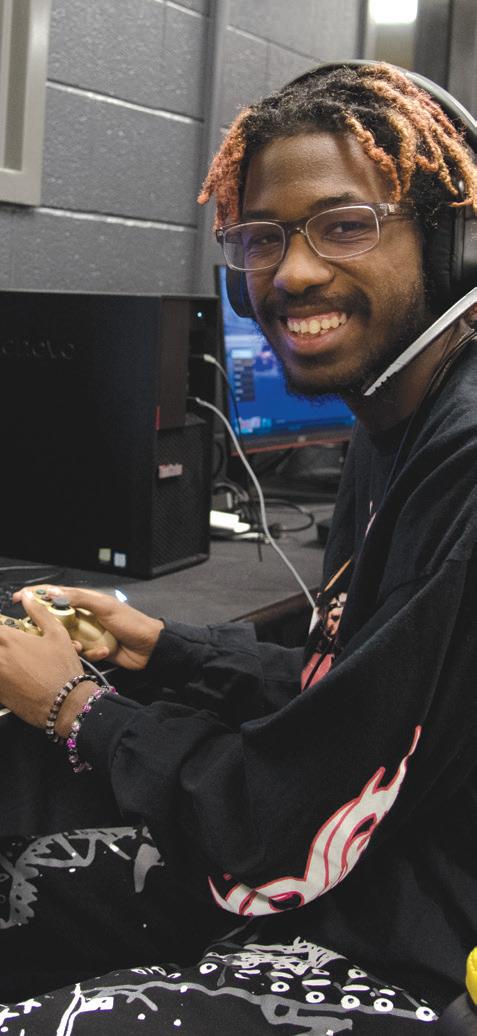
Taking nominations
www.hcremc.com
CONTACT US 800-248-8413
Fax: 765-529-1667
OFFICE HOURS
7:30 a.m.–4:30 p.m., Monday–Friday
STREET ADDRESS
3400 S. State Road 3 New Castle, IN 47362
MAILING ADDRESS P.O. Box D New Castle, IN 47362
A night deposit box is available 24 hours a day.
EMAIL hcremc@hcremc.com
SERVICE INTERRUPTIONS
To report a power outage, please call 800-248-8413, day or night.
MISSION STATEMENT
The mission of Henry County REMC is to provide reliable, safe and cost-competitive electrical service to enhance the lives of our members and the communities we serve.

BILL DUE DATES
Bills mailed on April 14 will be due May 2
Bills mailed on April 28 will be due May 16
Bills mailed on April 9 will be due April 28
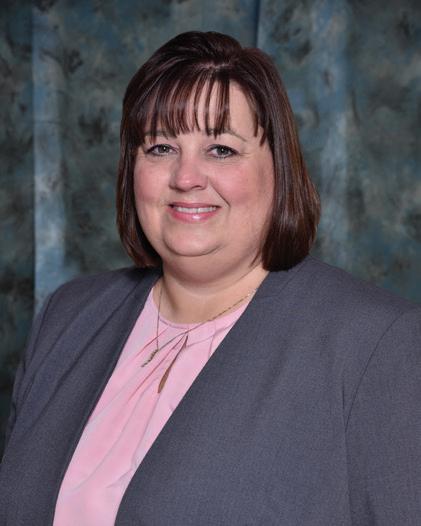
The entire HCREMC service territory is divided into nine districts, where each district is represented by a director. The director is elected by the memberconsumers living in that district and represents them when making important decisions for the electric cooperative. Each year, three HCREMC board seats are typically open for election, but due to a vacancy, this year there are four openings. Open seats for 2023 include:
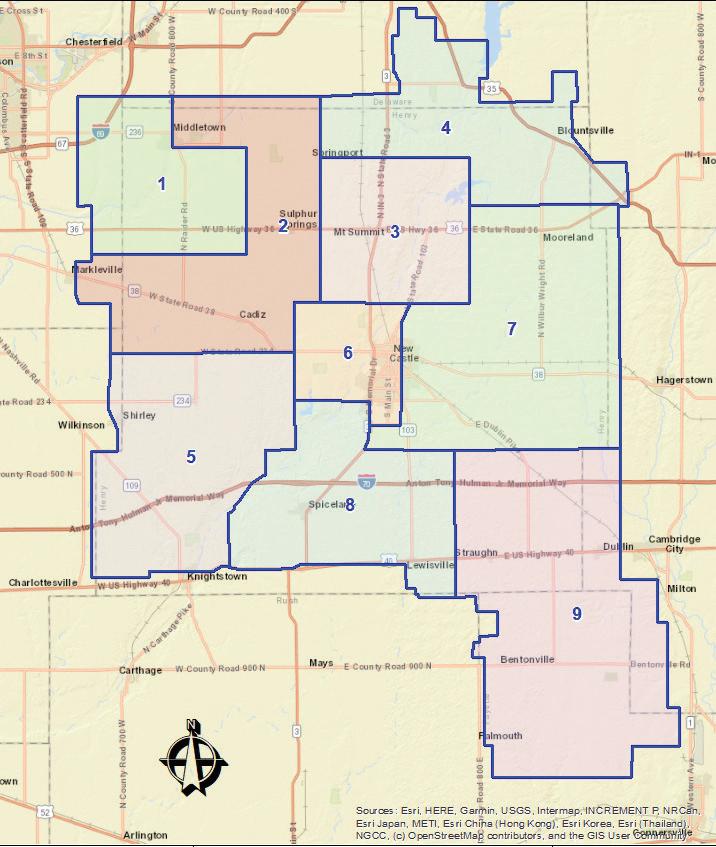
DISTRICT 3
Prairie and Jefferson Townships in Henry County
DISTRICT 4
Stony Creek, Prairie and Jefferson Townships in Henry County, Union Township in Randolph County, Monroe and Perry Townships in Delaware County
DISTRICT 5
Greensboro, Harrison and Wayne Townships in Henry County, Brown and Jackson Townships in Hancock County
DISTRICT 6
Henry Township in Henry County Nomination packets will be available in the front office at Henry County REMC. Packets must be turned in no later than May 1.
Directors set policy and guide the future direction of the cooperative. Qualified members of HCREMC, who live in the districts up for election, may seek election by filing a petition with 30 signatures of HCREMC memberconsumers who support the candidacy in the same district they are running for.
2023 HCREMC SCHOLARSHIP winners announced





You’ve probably heard that many automakers are transitioning several or all of their new vehicles to electric-only models over the next 10 years. Regardless of the type of car you drive today, the electrification of the transportation sector is underway.
We regularly receive inquiries about electric vehicles from HCREMC members, so we have provided a listing of answers to some of those frequently asked questions.
Q: Why is HCREMC communicating about electric vehicles?
A: It’s no secret that consumer interest in electric vehicles (EVs) is growing. Information can be found on how to make an informed decision when considering an EV purchase at hcremc.chooseev.com.
Q: Why is HCREMC involved in EV infrastructure issues?
A: Electric utilities are planning now to ensure they have the
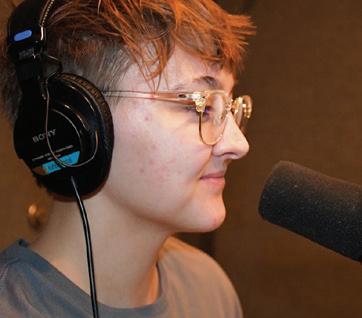
ELECTRIC VEHICLE FAQs
necessary electric infrastructure in place to meet future EV charging needs — without jeopardizing the ability to keep reliable power flowing to our local homes and businesses.
As your local energy provider, HCREMC is best suited to advise and help our members plan for the future.
Q: Can I charge my EV using an existing outlet, or do I need a special outlet?
A: All EVs come with a 110-voltcompatible (Level 1) charging unit that can be plugged into any standard household outlet. For an eight-hour overnight charge, this will enable traveling around 36 to 40 miles a day. If you typically drive longer distances or are in a hurry, a Level 2 charger takes about half the time and provides about 180 miles of range over an eighthour charging period. A Level 2 charger must be installed by a qualified electrician. Please contact HCREMC to schedule a temporary disconnect if you are planning to install a Level 2 charger.

Q: Does the outside temperature affect the range of an EV?
A: Outside temperatures, particularly colder weather, can impact the range of an EV. Unlike a gas-powered vehicle, where the heat is mostly coming from the engine, an EV must produce cabin heat and manage an optimal battery temperature with energy that comes from the battery, which can reduce battery range.
Q: Will an EV meet my daily driving needs?
A: If you are like most Americans and drive an average of 30 miles a day or less, an EV can likely meet your daily needs.
Q: What kinds of incentives are available for EVs?
A: Members who have a fully electric vehicle could qualify for the Cooperative Charge Program
To be eligible for the Cooperative Charge Program, Member must:
1. Be a residential member of HENRY COUNTY REMC with an account in good standing.
2. Agree to install, operate and maintain the Level 2 (240 Volt) electric vehicle charger at Member’s verified service address and at Member’s expense. It is recommended that a qualified electrician install the charging station on a dedicated 50-amp circuit.
3. Have or are in the process of receiving or purchasing a fully electric vehicle for personal use (Plug-in hybrid vehicles (PHEVs) are not eligible for this program. Proof of ownership or lease of
a fully electric vehicle may be required to verify eligibility).
4. Agree to install, connect to Wi-Fi, and activate the charger within 45 days of receiving the charger.
5. Agree to participate in surveys, on-site audits, and review of electric vehicle charger use data as determined appropriate by the Cooperative.
6. Obtain all necessary permits and comply with all applicable laws, rules, codes and regulations for the installation of the electric vehicle charging equipment.
There are a variety of tax credits, rebates and other incentives available for EV purchases. Visit www.afdc.energy.gov/laws/ electric-vehicles-for-tax-credit to learn about federal incentives available through the Clean Vehicle Credit program, and visit www.afdc.energy.gov/laws/ all?state=IN#State%20Incentives to learn about Indiana’s state incentives.
Q: Should I let my co-op know if I purchase an EV?
A: If you purchase an EV, please let us know so we can better serve you. You will receive a FREE SMART ENERGY KIT and could potentially qualify to receive a free Level 2 charger by participating in the Cooperative Charge Program. As more HCREMC members buy EVs, it’s helpful to know where they’re located in our area so we can ensure we have the necessary infrastructure in place to meet charging needs and provide reliable power to our local homes and businesses. Henry County REMC is interested in doing a
use analysis to determine the impact of EV charging on our electric distribution system. The information obtained from this analysis will be used to better design future EV programs and support the demand on the electric distribution grid.
To register your electric vehicle and take advantage of the incentives: Visit our website to register directly, call us at 1-800-248-8413 or email energy@hcremc.com.
We understand that making the switch to an EV is a big decision. Whether you’re ready to make an EV purchase or wondering if an EV can meet your daily driving needs, we’re here to help you make an informed choice.
UNPLANNED OUTAGE
HOURS BY CAUSE
year to date 2023
44% Transmission (Duke, Hoosier)
42% Trees
10% Public (Vehicles, dig-ins, etc.)
3% Design/equipment failure
1% Animals
NOTE: All other causes were less than 1% of our outage hours combined.
2023 HCREMC SUMMER COOPERATIVE CAMP
2023 HCREMC SUMMER COOPERATIVE CAMP
COOPERATIVE CAMP
SUMMER COOPERATIVE CAMP
SUMMER COOPERATIVE CAMP
SUMMER COOPERATIVE CAMP
SUMMER COOPERATIVE CAMP
HENRY COUNTY REMC
HENRY COUNTY REMC
HENRY COUNTY REMC
HENRY COUNTY REMC
HIGH SCHOOL STUDENTS ARE WELCOME TO APPLY FOR THE 2023 SUMMER COOPERATIVE CAMP HOSTED BY HENRY COUNTY REMC. STUDENTS WILL RECEIVE HANDS-ON TRAINING AND GAIN VALUABLE KNOWLEDGE ABOUT SKILLED TRADES, AS WELL AS THE BENEFITS OF WORKING IN THE UTILITY INDUSTRY. THE COURSE WILL HIGHLIGHT YOUR LOCAL COOPERATIVE AS A PLACE OF EMPLOYMENT AND INTRODUCE YOU TO OTHER CO-OP RELATED JOB OPPORTUNITIES, FROM THE WAREHOUSE TO THE FRONT OFFICE. HCREMC EMPLOYEES AND VENDORS ARE GEARED UP AND READY TO PROVIDE YOU WITH A ONCE-IN-A-LIFETIME EXPERIENCE!
HIGH SCHOOL STUDENTS ARE WELCOME TO APPLY FOR THE 2023 SUMMER COOPERATIVE CAMP HOSTED BY HENRY COUNTY REMC. STUDENTS WILL RECEIVE HANDS-ON TRAINING AND GAIN VALUABLE KNOWLEDGE ABOUT SKILLED TRADES, AS WELL AS THE BENEFITS OF WORKING IN THE UTILITY INDUSTRY. THE COURSE WILL HIGHLIGHT YOUR LOCAL COOPERATIVE AS A PLACE OF EMPLOYMENT AND INTRODUCE YOU TO OTHER CO-OP RELATED JOB OPPORTUNITIES, FROM THE WAREHOUSE TO THE FRONT OFFICE. HCREMC EMPLOYEES AND VENDORS ARE GEARED UP AND READY TO PROVIDE YOU WITH A ONCE-IN-A-LIFETIME EXPERIENCE!
HIGH SCHOOL STUDENTS ARE WELCOME TO APPLY FOR THE 2023 SUMMER COOPERATIVE CAMP HOSTED BY HENRY COUNTY REMC. STUDENTS WILL RECEIVE HANDS-ON TRAINING AND GAIN VALUABLE KNOWLEDGE ABOUT SKILLED TRADES, AS WELL AS THE BENEFITS OF WORKING IN THE UTILITY INDUSTRY. THE COURSE WILL HIGHLIGHT YOUR LOCAL COOPERATIVE AS A PLACE OF EMPLOYMENT AND INTRODUCE YOU TO OTHER CO-OP RELATED JOB OPPORTUNITIES, FROM THE WAREHOUSE TO THE FRONT OFFICE. HCREMC EMPLOYEES AND VENDORS ARE GEARED UP AND READY TO PROVIDE YOU WITH A ONCE-IN-A-LIFETIME EXPERIENCE!
HIGH SCHOOL STUDENTS ARE WELCOME TO APPLY FOR THE 2023 SUMMER COOPERATIVE CAMP HOSTED BY HENRY COUNTY REMC. STUDENTS WILL RECEIVE HANDS-ON TRAINING AND GAIN VALUABLE KNOWLEDGE ABOUT SKILLED TRADES, AS WELL AS THE BENEFITS OF WORKING IN THE UTILITY INDUSTRY. THE COURSE WILL HIGHLIGHT YOUR LOCAL COOPERATIVE AS A PLACE OF EMPLOYMENT AND INTRODUCE YOU TO OTHER CO-OP RELATED JOB OPPORTUNITIES, FROM THE WAREHOUSE TO THE FRONT OFFICE. HCREMC EMPLOYEES AND VENDORS ARE GEARED UP AND READY TO PROVIDE YOU WITH A ONCE-IN-A-LIFETIME EXPERIENCE!
WHAT TO EXPECT:
WHAT TO EXPECT:
WHAT TO EXPECT:
WHAT TO EXPECT:
June 26-June 30
June 26-June 30
Visit www.hcremc.com by May 31 to apply
June 26-30
Visit
www.hcremc.com by May 31 to
LIVE
DEMO POLE DIGGING/SETTING
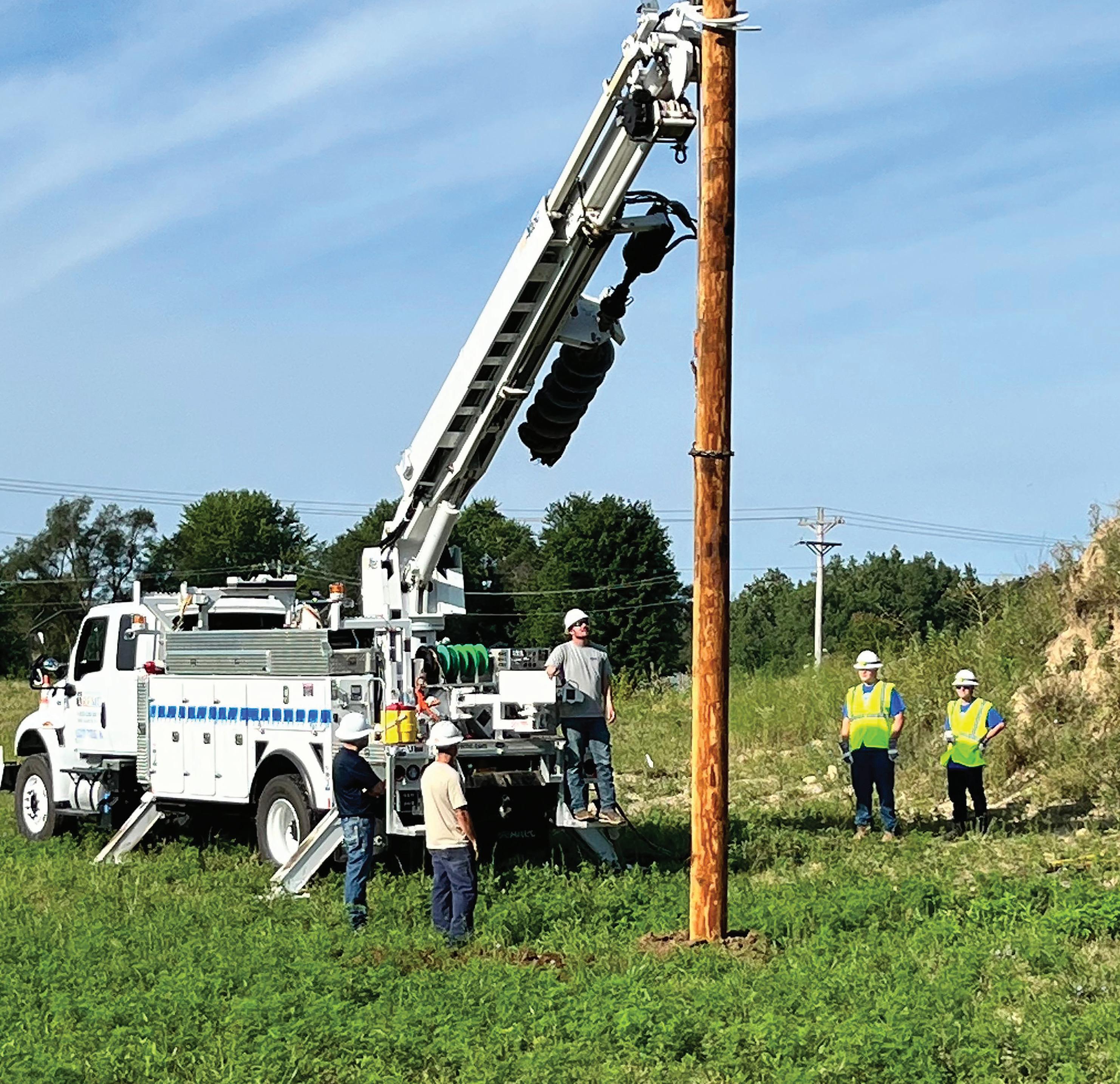
LIVE LINE DEMO
POLE DIGGING/SETTING
LIVE LINE DEMO
ATSSA TRAFFIC FLAGGER CERTIFICATION
LIVE LINE DEMO POLE DIGGING/SETTING
POLE DIGGING/SETTING

ATSSA TRAFFIC FLAGGER CERTIFICATION
ATSSA TRAFFIC FLAGGER CERTIFICATION
SPLICING & TERMINATING COOPERATIVE HISTORY/MISSION
SPLICING & TERMINATING
SPLICING & TERMINATING
COOPERATIVE HISTORY/MISSION
COOPERATIVE HISTORY/MISSION
BUCKET TRUCK OPERATION AND SO MUCH MORE!
BUCKET TRUCK OPERATION AND SO MUCH MORE!
BUCKET TRUCK OPERATION AND SO MUCH MORE!
3400 S STATE ROAD 3 | NEW CASTLE, IN Phone : 800-248-8413
Website : www.hcremc.com
3400 S STATE ROAD 3 | NEW CASTLE, IN
Phone : 800-248-8413
Website : www.hcremc.com

CALL YOUR CO-OP YOU GO SOLAR before
For those considering the installation of solar energy at home, there is plenty of information — and misinformation — floating around.

To get to the bottom of it all, the one thing any prospective solar owner should do is contact their local electric cooperative.
There are a host of reasons why, but here are a few of the most important ones:
In order to maximize the benefit of installing solar, you first need to understand the electrical use in your home. Your local electric cooperative can provide information and history specific to you, and perhaps even perform an energy audit, to ensure the right size solar system is purchased.
The cooperative can answer basic questions, provide
resource materials and direct you to reputable websites or contractors in your area. They will also be able to inform you of any potential financial incentives for installation, because federal, state and local programs are constantly evolving. Even with a solar system installed, during times of high energy demand, as well as at night and on cloudy days, you will still need to be connected to the cooperative’s power lines. Each utility sets its own policies, rates and rules for interconnection that an installer may not know about. The cooperative will ensure that an interconnection application is completed and that you are notified of any application fees, and that all other documentation, including necessary insurance, is completed.
If there is any opportunity for the cooperative to “purchase” excess energy generated by the solar system, a local representative can provide all the necessary information.
If you have questions about what installing solar energy could mean for your home, don’t hesitate to ask your local electric cooperative. Nothing is more important than being well informed before making such a big decision.
by Staci Montgomery Engineering and Operations Specialist Clark County REMC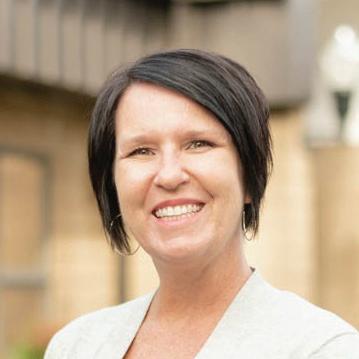

Give line crews lots of room:

IT’S THE LAW
This year, National Work Zone Awareness Week is April 17-21. Be mindful of lineworkers on the job.
Spring has arrived with its profusion of color: whites and pinks … and orange — lots of orange — as in the orange of work zones.
National Work Zone Awareness Week (April 17-21) reminds motorists to be careful around those whose jobs put them along the roadways. Indiana’s electric cooperatives remind motorists that work zones also include utility crews who work along the roadsides to build, repair and maintain the highway of electric power lines. Sometimes, crews can be around the next corner or just over the hill — day or night.
“While routine line work is done during daylight hours, emergencies happen at anytime,” said Jon Elkins, vice president of safety, training and compliance at Indiana Electric Cooperatives. “We want to remind motorists our crews can be working at all hours and to be careful when they see warning signs and flaggers.”
When motorists see the orange diamond-shaped work zone warning signs and vehicles with flashing amber lights, they should slow down and prepare for the zone ahead.
Indiana law requires motorists to approach cautiously and change lanes away from emergency vehicles if they can do so safely. If not, they should reduce their speed to 10 mph under the posted speed limit and proceed with caution. Motorists should not stop in the roadway; this may cause a rearend collision with other vehicles.
Emergency vehicles protected by the law include:
• Police vehicles
• Ambulances
• Fire trucks and rescue equipment
• Highway incident-response vehicles
• Highway maintenance vehicles
• Utility service vehicles
• Tow trucks
Violating the law can result in a fine and a suspended license. Steeper penalties, including jail time, are enforced for infractions within work zones.
Though move-over laws are only for emergency vehicles, drivers should always be courteous to those parked on the shoulder. Give them room to safely repair their vehicles and help prevent tragedies.
SOURCES: Indiana State Police, Workzonesafety.org, moveoverlaws.com
TIPS FOR DRIVING SAFELY IN WORK ZONES
• Take extra care to pay attention and expect the unexpected. Work zone configurations can change without notice.
• Don’t text or talk on the phone and avoid taking your hands off the wheel.
• Watch for speed limit reductions, narrowing lanes, changing traffic patterns and highway workers.
• Respect the posted speed limits and merge as soon and as safely as possible. This will allow traffic to flow smoothly.
• Keep in mind: Driving 45 mph, instead of 55 mph, through a 5-mile work zone will only add 1.2 minutes to your trip. Speeding and aggressive driving are major causes of work zone crashes.
• Keep a safe distance on all sides of your vehicle and maintain a safe following distance. Rear-end collisions are the most common type of work zone crash.
Indiana Electric Cooperatives names JOHN CASSADY CEO



John Cassady has been named Indiana Electric Cooperatives’ next chief executive officer. IEC is the statewide electric cooperative trade association and the publisher of Indiana Connection. Formerly executive vice president of member and stakeholder relations at Wabash Valley Power Alliance (WVPA), Cassady became CEO of the 88-year-old organization March 15.
“I am honored for the opportunity to lead a member organization with such a rich history and tradition as Indiana Electric Cooperatives,” said Cassady. “I am grateful to IEC’s board of directors for entrusting me with this responsibility and I am excited to work with IEC’s exceptional team in service to our 38 member cooperatives and the communities served by them.”

county feature
Jennings County
Jennings County is home to a “disaster” just waiting to happen. That place is the Muscatatuck Urban Training Center . The center provides the infrastructure for realistic scenarios replicating natural and manmade disasters, military urban warfare and much more. Military; local, state and national agencies; and civilian first responders come to Jennings County from around the United States and the world to take part in training exercises at the center.
Located just east of North Vernon, Muscatatuck’s campus features a 1,000-acre urban and rural landscape with more than 190 brick-and-mortar structures; 1.8 miles of subterranean tunnels; a clock tower used as a rappel tower; a cave complex; more than nine miles of roads; a standing water rescue environment that includes a village of seven flooded houses; managed airspace; a 185-acre reservoir; and a cyber live-fire range. Owned by the state of Indiana, the site is leased to the U.S. Army and managed by the National Guard.
The center is located on the grounds of the former Muscatatuck State Developmental Center that was created in 1920 as the Indiana Farm Colony for the FeebleMinded. For 85 years, it was one of Indiana’s largest mental institutions with some 3,000 patients and was one of Jennings
County’s largest employers with some 2,000 staff members. Following changes in the state’s overall health administration and in the treatment of mental illness, the number of patients at the institution began to decline. In 2001, the state announced the institution’s closure. After it closed in 2005, the state passed control of the facility to the Indiana National Guard which led to the development of the training center.
Jennings County is also bordered on the east and west by two national wildlife refuge areas that offer visitors natural beauty and opportunities to enjoy wildlife.

Big Oaks National Wildlife Refuge , encompassing 50,000 acres, spills over into eastern Jennings County from parts of Jefferson and Ripley counties. The refuge covers a portion of the former Jefferson Proving Ground, a munitions testing facility operated by the U.S. Army between 1940-1995. The refuge is designated as a “Globally Important Bird Area” and contains many rare species of plants and animals in the
County Facts
FOUNDED: 1817
NAMED FOR: Jonathan Jennings, first governor of the state of Indiana.
POPULATION: 27,611
COUNTY SEAT: Vernon
INDIANA COUNTY NUMBER: 40
wetlands, grasslands, shrublands and forest.
On the western edge of the county is Muscatatuck National Wildlife Refuge . Established in 1966, the refuge is noted for providing feeding and resting areas for migratory birds.

Made with a mission
Shelly Henley’s bakery is staffed by employees with autism.

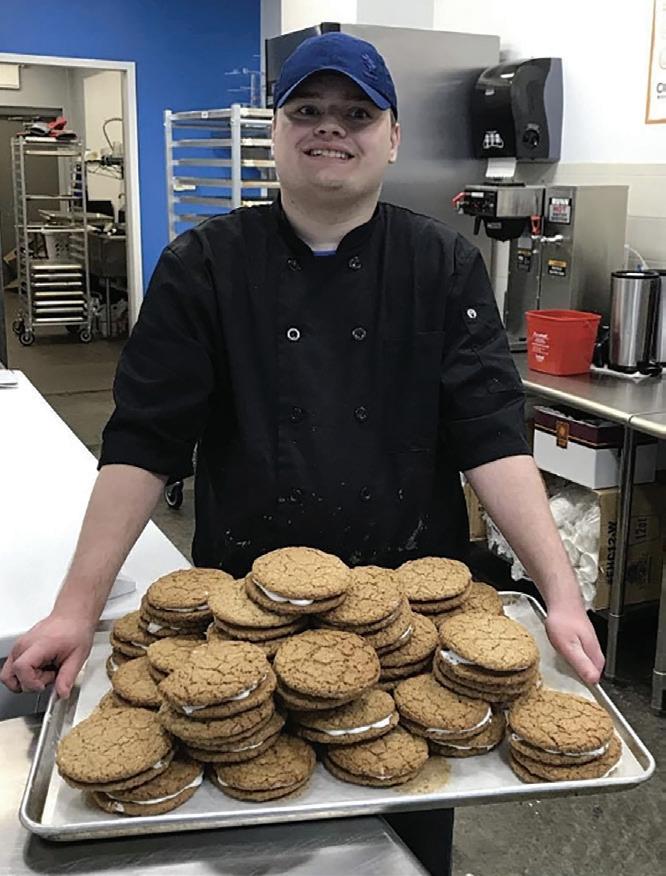
No Label at the Table is described on the company’s website as “a glutenand-dairy-free food company whose mission is to employ people on the autistic spectrum and provide job training skills.”
Located in the heart of the Arts and Design District on W. Main Street in Carmel, No Label at the Table is owned by Shelly Henley, whose oldest son, Jacob, has autism. When Jacob was turning 18 and transitioning to adulthood, he told his mother that he wanted to be a chef in a restaurant. So, with passion and heart — but without any formal culinary or business training — Henley created a business to help make Jacob’s dream a reality.
over the years, Henley and Jacob baked together, creating delicious recipes and fond memories. They used some of those recipes as the basis for their business and have experimented over time to substantially increase their offerings.

World Autism Awareness Day
“In this process, I’ve gained a few pounds and realized I hate frosting, but I’ve found meaningful work,” Henley explained.
Henley and her team began selling their baked goods at farmers markets, and on March 16, 2018, the physical store opened, staffed with over a dozen employees on the autism spectrum.
Jacob started eating a gluten-andcasein-free diet at a young age, and
If you have never visited their storefront and are wondering what to order, the most popular item is the “Oatmeal Dream” cookie sandwich;
it’s like an oatmeal creme pie, only larger (and even tastier). Other crowd-pleasers include pumpkin gingerbread, English muffins and garlic breadsticks. In the freezer case, you can usually find hearty soups and take-home meals. The bakery is carryout only, but if it’s a nice day, you can enjoy your goodies while you stroll along Main Street and the nearby Monon Greenway.
If you have questions about the business, make inquiries by emailing contactus@nolabelatthetable.com. Since a third of the employees are non-verbal, No Label at the Table does not have a phone.

Toast toppers

WAKE UP YOUR BREAD, ANY TIME OF DAY
1 can cannellini beans, drained, rinsed and smashed with a fork
12-15 diced grape tomatoes
⅓ cup chicken broth
¾ teaspoon minced garlic
1 teaspoon extra virgin olive oil
¼ teaspoon dried basil
Salt and pepper to taste
Toasted bread for serving (rye or wheat is recommended)
Shredded Parmesan cheese
Combine beans, tomatoes, broth, garlic, olive oil, basil, salt and pepper in a saucepan and bring to a simmer. Simmer about five minutes until mixture is like a paste. Spread warm bean mixture on toast and sprinkle with Parmesan cheese.
BLUEBERRY JAM

Sharon Krick, Knox, Indiana
1 pint fresh blueberries, washed and picked over 2 tablespoons chia seeds
½ cup honey or pure maple syrup (you can increase/decrease amount to taste)
Toasted bread for serving
Add the blueberries, chia seeds and honey or maple syrup to a small pot and cook over medium heat for about 30 minutes, mashing the berries with a spoon while stirring. Remove from heat; the jam will thicken as it cools. Spread on toast to serve and store any remaining jam in a glass jar in the refrigerator.
DIJON ASPARAGUS CHICKEN SALAD
Patricia Piekarski, Harvey, Illinois
1 cup mayonnaise or light mayonnaise
2 tablespoons Dijon mustard
2 tablespoons lemon juice
1 teaspoon salt
½ teaspoon black pepper
1 pound cooked boneless, skinless chicken breast, shredded or finely chopped
1 (10 ounce) package frozen asparagus spears, thawed and finely chopped
1 red bell pepper, finely chopped
Toasted bread, cut into toast points, for serving
In a medium bowl, stir mayonnaise, mustard, lemon juice, salt and pepper together. Add chicken, asparagus and bell pepper and stir to coat. Refrigerate for at least one hour, then spread the mixture on toast points to serve as an appetizer.

eSPORTS A REAL GAME CHANGER
 BY RICHARD G. BIEVER
BY RICHARD G. BIEVER
When Tyrese Ellis was a high school freshman, his future looked uncertain at best. He admitted he lacked motivation and was “borderline failing” most classes.
“I was a heavy gamer,” he said. “I wasn’t heavy into going to school.”
When the Fort Wayne Snider senior says “heavy gamer,” Tyrese means video games. He played them nonstop, mostly alone in his bedroom. Back in grade school, Tyrese played a lot of basketball with friends, he noted. But as they all grew older, the friends started going to different schools and in different directions. “I started playing video games more and more, and then I eventually just stopped playing basketball,” he said.
Video games let Tyrese escape the stresses of socializing and making new friends. Already a little shy, he retreated more into the world on the video screen. Tyrese became skilled at gaming — adroitly manipulating avatars to victories against online opponents. All the while, his academic and personal skills atrophied.
The game changer that brought Tyrese back into the real world came during his sophomore year, 2020. That’s when Snider High School started an “esports” program. Esports is short for “electronic sports.” But it’s more than just “playing video games.”
Esports combines video gaming with organized team competition. That synergy is creating a whole new arena at middle schools, high schools and universities around the electrified world. It’s turned professional, too. Out of the competition come the intangibles — the esprit de corps — the pride in one’s school, in one’s teammates and in oneself.

Call it “esprit of esports”: Schools that have started esports programs are finding that esports fosters the same leadership, sportsmanship and communication skills traditional athletic programs strive to build. Students like Tyrese, who previously slipped through the cracks of athletics and other school activities, are now finding a place among their classmates and are engaged as never before.
“Tyrese is my favorite success story,” said Joseph Wilhelm, Snider High School’s esports adviser. “His story is kind of why we developed the program in the first place. He latched onto esports as a viable career path and college path and sees a goal.”
Since esports participation requires the same level of academic achievement as athletics and other extracurriculars, Tyrese found the motivation to attend classes and improve his grades. He’s now an A-B student. He is even planning to retake
the classes he failed as a freshman to improve his GPA in hopes of achieving college admission.
Wilhelm says Tyrese is so highly skilled at Rocket League, one of the most popular games, he believes college esports scholarships will be in the offing for Tyrese when he graduates next month. “He was one of those kids who would never get to go to college if it weren’t for esports.”
FROM PONG TO PRESENT
Ever since the first pixelated Pong ball pinged across the primordial video screen a half-century ago, organized competitions have been a part of video game culture. While the complexity of the games, their graphics and storylines advanced light years over the next 30 years, competitions were mostly kept on an amateur level. That changed in the 2000s with the advent of livestreaming on the internet. Suddenly, the generation that grew up playing these games at home could also watch the best of the best compete. Video gaming became a professional sport with the surge in viewership. In 2018, the League of Legends World Championship, for example, brought in more viewers than the Super Bowl and the NCAA continued on next page
continued from page 21
Final Four combined. In 2021, esports brought in more than $1 billion in revenue.
Today, the booming esports industry attracts 26.6 million monthly viewers who watch gamers compete in a vast array of virtual venues. Beyond games simulating real sports and traditional board games like chess, the online universe has expanded with fantastical strategy and battle arena games like Tyrese’s specialty, Rocket League, a kind of soccer played with rocket-powered cars. Even the International Olympic Committee (IOC) has been giving esports a look-see. In 2017, the IOC acknowledged the growing popularity of esports and said that competitive esports could be considered a sporting activity. While noting it was premature to make medal events for esports in the 2024 Summer Olympics in Paris, the IOC has cited the need to keep the Olympics relevant to younger generations. Still, some esports-related activities might be part of Paris next year.
Beyond the pros on arena stages and online, esports has given rise to a whole host of career paths for professionals in marketing, information technology, programming, game and graphic design, and even broadcasting. Commentators who call the action occurring on the
screen of esports events are called “shoutcasters.”
The growth of esports over the last two decades has brought a demand for extended opportunities for esports athletes. Universities across North America began offering scholarships to incoming freshmen to join their collegiate esports teams. In 2016, the National Association of Collegiate Esports (NACE) was founded as a nonprofit organized by its member schools to develop the framework for esports competition. Over 240 institutions with more than 5,000 student/athletes across the U.S. and Canada are members. NACE colleges and universities award an estimated $16 million a year in student esports scholarships and aid.
IT PAYS TO PLAY
Just as collegiate esports has NACE, esports programs at Indiana secondary schools now have the Indiana Esports Network (IEN). Wilhelm, who was among the founding educators of IEN in 2019 and is now director, says the nonprofit organization functions like a state athletic association.
Indiana Esports Network is 100% volunteer driven and educator led, and its programs are free to students. Over 100 school districts across the state have joined the network. Wilhelm estimates over 1,500 Hoosier
students are participating in esports programs the network coordinates and oversees.
Schools participating in esports run the gamut in size, demographics and socioeconomic populations — from big city schools like Ben Davis in Indianapolis to rural schools like Seeger Memorial Jr.-Sr. High in Warren County. Member schools include public, private and parochial.
Wilhelm said their statistics are showing that 80% of esports participants never participated in other school activities. “People understand why extracurriculars are important and the value of them, but they’re not reaching every student,” he said. “Our motivation here at Snider was to get students more motivated in school. We noticed a large portion of the student population wasn’t playing sports. They aren’t in band. They don’t really do anything extracurricular. They just come to school, go to their classes and go home. And for those students, there wasn’t a lot of extrinsic motivation for doing well.”
Today, Snider has about 80 students participating in esports. The esports game room, once a computer lab, is equipped with 20 single gaming stations and three large monitors with rows of game chairs. After school, the room is full of students interacting with the games and each other. Wilhelm admits that esports are still new to the academic environment, so it takes some convincing of administrators and parents — which requires facts and some tact.

“The initial comment is always like, ‘What? We’re trying to get our kids to stop playing video games.’
“Yeah, we get that,” Wilhelm tells them, and then comes the IEN pitch: “But let’s use it as a tool. Let’s control that and teach them healthy habits, as opposed to just what they’re doing at home. Let’s show how to do it in a productive way.”
Some of the valuable lessons that Wilhelm believes esports imparts to students include:
• COMMUNICATION. “We’re trying to focus on those soft skills that employers are looking for,” Wilhelm said. “And communication in teambased activities, being able to communicate clearly and effectively under higher stress or real-time situations is definitely useful.”
• TEAMWORK. “For some of them, it’s just the benefit of being part of a team where other people are depending upon them,” Wilhelm said. Sometimes students have never been in that team environment. “That sense of belonging and teamwork is impactful for a lot of our students.”
• LEADERSHIP. “Most all of our teams have in-game leaders, leading while the game’s happening. I think of it like your shot caller on the court or on the football field who’s actively making decisions. Putting students in leadership roles helps them develop that way, too.”
• SPORTSMANSHIP. “Video games have a stigma around them about how people interact online, of being
toxic to faceless names on a computer.” Wilhelm said esports stresses sportsmanship and not talking smack. “What’s been super helpful, too, is having students meet their opponents in person at events, being able to put a face to this person online. And so, your actions online have real consequences when you tie that communication you’re having online to a real person.”
Wilhelm said there are also legitimate concerns about video game violence. He noted that in middle school and high school, esports includes games rated only “teen” and below. Some games do have simulated violence, he said, but they are all rated appropriate for teenagers.

Fortnite, for instance, is a popular game among teenagers. The goal is to eliminate other players. “But it’s very stylized. It’s akin to an animated cartoon,” he noted.
“It’s naive to think they aren’t playing these things,” he added. “But we say, ‘let’s teach them how to do it in a responsible way,’ as opposed to violence for the sake of violence.”
At the high school level, IEN currently
organizes regular competitions for some 15 different games across three different divisions based on school size, in addition to middle school and unified competitions in conjunction with Special Olympics Indiana. Students at each school can compete at three levels: varsity, junior varsity and club. In addition to league/tournament administration, IEN provides support and training for coaches to assist their programs.
Right now, participating schools are gearing up for the in-person state IEN championship, which will be held at Ball State University April 29.
LEVELING UP
LaGrange County REMC’s Operation Round Up (ORU) Fund committee hadn’t seen a grant request like the one Prairie Heights High School delivered in late December.
Cynthia Jones, an English teacher at Prairie Heights and the school’s grant writer, was asking for funds to help the school in eastern LaGrange County create a technology lab
continued on next page
High school students from around the state compete in person at the 2022 Indiana Esports Network’s championship tournament at Bendix Arena in South Bend last spring. The arena is a state-of-the-art facility dedicated to esports. Photo courtesy of Indiana Esports Networkcontinued from page 23
housing computers with specifications appropriate for graphic arts/website design — and esports gaming.

“Theirs was not a typical application,” said Nic Engle, marketing and public relations coordinator at the REMC and secretary of its ORU committee. “I don’t think we’ve ever had a request from a school for computer equipment for video gaming. But we have long supported youth athletics, dance teams and the like. With the increasing popularity of esports, the committee felt some funding to get them started with their own equipment would benefit a large number of students for years to come.”
Operation Round Up is a community program in which many electric cooperatives around Indiana and the nation participate. The fund is created by consumers who voluntarily allow their co-op to round up their electric bill each month to the next dollar. That amount, on average around 50 cents per consumer per month, is then pooled into a special account and dispersed for local charitable needs. LaGrange’s ORU committee awarded Prairie Heights $1,500 for the equipment.
Last fall, Jeremy Swander, the principal at Prairie Heights, heard the Indiana Association of School Principals (IASP) was initiating an “Esports Bowl,” akin to some of its

traditional Spell Bowls and Quiz Bowls. Filling in as a teacher at the start of the school year, Swander asked his calculus class if anyone would be interested in starting an esports program. He got lots of questions, and ultimately 10 seniors participated.
For the pilot program, Jones said the school had to do a little begging and borrowing. The students brought in their own gaming systems from home, and the school’s FFA program loaned esports one of its presentation monitors. “We didn’t have any monitors that were new enough to connect to the gaming systems,” she said. “This was the makeshift way we’ve been doing it.”
Like Wilhelm, Jones saw how team play led to better engagement and collaboration during the pilot program in the fall. “It was set up through IASP that these guys could have joined in and competed from home. But they preferred to come to school and be here in person. They said it was better for them as a team. They communicated better, and they felt they would be more successful by being together in the same room versus trying to all play from home.”
The ORU grant, along with another from LIFE, LaGrange County’s youth philanthropy group, will allow the school to start purchasing monitors this spring. Jones said 27 students have expressed interest in being part
of the esports program, which could begin as soon as the monitors arrive.
“The kids will still be bringing their gaming systems from home, but at least they won’t be bringing televisions on the bus.”
END GAME
Tyrese Ellis still isn’t sure about his career plans. He said he’s thinking he’d like to become a nurse and maybe study Japanese. But one thing is certain that wasn’t four years ago: He’ll be able to graduate from high school next month and perhaps earn a scholarship to college.
As he and his two Rocket League teammates were about to sit down in the Snider esports room to an after school online match with a team from Elkhart County (which they later wrapped up quickly, winning 3 games to 0), Tyrese said, “I’ll always feel grateful and proud for being in here.“
Much like his Rocket League avatar shooting from one side of the arena to the other with a twitch of his finger, esports has changed the trajectory of where Tyrese’s life is pointing. “Everything really started changing my sophomore year. I started turning it around because of esports — because I had motivation.”
Richard G. Biever is senior editor of Indiana Connection.

Professional progression:
RAPID CHANGE
At 23, Shadd McLochlin has been working for just about five years. In that short span, he’s worked all aspects of wireless and fiber internet, has earned a double major in business management and marketing, supervises five employees and has worked for two owners operating under two business models.

“It’s always changing. It’s always moving quickly. Every time I look at our map, there’s something added to it, another project we’ve got going on. I’m excited to see where it goes because it’s already gotten a lot bigger and a lot better than it was a little over four years ago when I started,” McLochlin said.
The company, Broadway Broadband, was purchased in 2020 by MiamiCass REMC, the Peru-based electric cooperative.
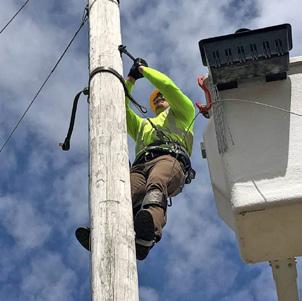
“It’s definitely a different culture going from a single owner to being owned by a not-for-profit. Before we were just a normal business. It was ‘get as many customers as you can and make the money.’ With the cooperative, though,
we’re still doing the same job, but it’s more customerfocused.”
McLochlin started with Broadway in 2018 while still in college. At that time, he was doing physical installations of wireless internet in customers’ homes while continuing his degrees. When the electric cooperative purchased Broadway early in 2020, he began doing fiber construction and maintaining the wireless network. While McLochlin said he enjoyed the physical aspect of the job, he shared with the new owners he wanted to eventually move indoors to a managerial post that went along with the degrees he was pursuing. Within six months, he was moved to broadband tech support. His experience in both installation and construction served him well in that role.
Today, McLochlin is Broadway’s installation/scheduling manager. The job entails planning the current and
future growth of the subsidiary and overseeing five, but soon to be more, employees. The subsidiary now has 1,500 customers in a footprint that is expanding to six counties.
He is also now pursuing a master’s degree in public management, a degree similar to an MBA but geared more toward nonprofit operations. He’s also completed a three-month management internship and is currently doing a marketing and member services internship at MiamiCass REMC.
Bringing home a SHELTER PET?
Preparation and patience are key
National Adopt a Shelter Pet Day is April 30, so if you’ve researched the right type of animal for you and are ready to bring a pet home, now’s a perfect time. Even though a shelter animal may have had a rough start to life, many make wonderful family pets, and some even go on to become service animals.
“Shelter animals are remarkable. We know this firsthand, because the dogs we train to become service dogs started as shelter dogs. Trained on over 30 skills, our program dogs show time and time again the amazing potential that shelter pets can have,” said Kelsey Burton, director of development at Medical Mutts Service Dogs Inc., a non-profit based in Indianapolis dedicated to training service dogs.
If you do decide to adopt, here are some tips to help make it easier for a shelter pet to acclimate to your home. Above all, try and be patient and allow your animal time to adjust to its “new normal.”
• Prior to the arrival of your pet, make sure you have a quiet space prepared for them that is away from all other animals. Keep your new arrival away from any other pets for at least the first 24 hours to give everyone time to adjust and decompress.
• If you are adopting a dog, have a collar with an identification tag ready with your name and contact number on it, and put it on the animal right away in case the dog escapes.
• Be prepared for potty accidents. Even a pet that is considered housetrained might have accidents due to the stress of adjusting to new surroundings.
• Provide food and water for your new pet, but don’t be surprised if they refuse to eat for the first day or two.
• Offer an enrichment activity. Your pet may not respond to it at first, but allowing them to experience new things, such as interactive toys or puzzle mats, can expand their world and help keep them entertained.
Scholarship
WINNERS ANNOUNCED
Hoosier Energy recently announced the 2023 recipients of the second annual W. Eugene Roberts and Daniel L. Schuckman Memorial Scholarships.
Ryan Wilson and Morgan Sutton, both of Osgood, Indiana, were named the winners of the $5,000 scholarships, given in memory of two longtime Hoosier Energy directors and board officers.

Wilson and Sutton are cousins who grew up across the pasture from each other with a close, almost brother-like relationship. They didn’t expect to choose a career together, though.
Sutton was a year ahead of Wilson in school and graduated from Jac-CenDel Junior-Senior High School in 2021. After graduation, he started with Long Electric in Indianapolis, working on the Franciscan Health Orthopedic Center in Carmel and another hospital in Mooresville.
However, interior wiring wasn’t where Sutton saw his future.
He’d already looked into becoming a lineman, and when Wilson invited him to visit the North American Lineman Training Center (NALTC) in McEwen, Tennessee, it was a no-brainer.

“We really liked what they had to say, what they had to offer and how they shot us straight,” Sutton said. “We both applied and got in at the same time, and we’re pretty pleased with where we came out.”
Wilson’s course changed midway through his senior year at Jac-CenDel, where he graduated in 2022.
“I was always focused on construction management, moving up the ladder as a carpenter like my dad,” he said. “A guy my dad worked with, his son was a lineman and loved it, so he suggested it would be a good career if I didn’t go into carpentry.”
The idea of traveling to help with storms, as well as the work itself, grabbed Wilson’s attention.
“Working with tools and on poles, I was fascinated,” Wilson said. “I didn’t have any idea what (being a lineman) was — it was brand new to me, but it interested me.”
Starting lineman school together helped calm both of their nerves, and by the time Sutton and Wilson were done in December 2022, both had secured jobs.
Sutton is back home working as a groundsman for Southeastern Indiana REMC, while Wilson has a contract job with MasTech running fiber lines in Virginia.
“For me and my cousin to be the ones receiving the scholarships, that’s quite a big deal,” Sutton said.
Spring cleaners, take note: Multi-purpose cleaner recalled
Colgate-Palmolive has recalled certain varieties, sizes and product lots of Fabuloso Multi-Purpose Cleaner due to the risk of exposure to bacteria. Pseudomonas species bacteria, which are environmental organisms found widely in soil and water, may be in the product. People with weakened immune systems, external medical devices or underlying lung conditions who are exposed to the bacteria face a risk of serious infection that may require medical treatment. The bacteria can enter the body if inhaled, through a break in the skin or through the eyes. People with healthy immune systems are usually not affected by the bacteria.
Bottles of Fabuloso, in multiple scents and sizes, were sold at Dollar General, Family Dollar, The Home Depot, Sam’s Club, Walmart and other major retailers nationwide and online from December 2022 through January 2023 for between $1 and $11.

The first 8 digits of the lot code of the recalled products are 2348US78 through 2365US78 and 3001US78 through 3023US78. The lot code is located on the back of the bottle above the label and may be in the folds of the plastic bottle design. For a complete list of products, visit fabulosorecall.com.
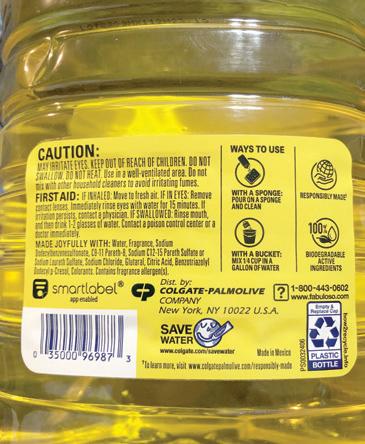

Contact: Colgate-Palmolive Company at 855-703-0166; online at fabulosorecall.com; or at fabuloso.com and click on the banner at the top of the landing page for a list of the UPC and lot codes of the recalled products and for more information.
‘My First’ Disney figurines pose choking hazard
Five Disney character figurines, branded as “My First,” have been recalled. The arms or legs on the soft vinyl figurines can detach, posing a small part choking hazard to children. The character figurines in the recall include Mickey Mouse, two versions of Minnie Mouse, Buzz Lightyear and Stitch. Some of the figurines have a bead rattle. They measure from 4.25 to 5.25 inches high. The firm has received 10 reports of small parts detaching from the figurines. No injuries have been reported. They were sold at buybuy BABY and other toy, gift and bookstores nationwide and online from May 2022 through December 2022 for between $15 and $19.

Contact: Kids Preferred at 888-968-9268; email at recall@kidspreferred.com; or online at https://kidspreferred.com/pages/recall-safety-announcements or kidspreferred.com and click “Recall Information” on the bottom of the page for more information.
Air fryers recalled for faulty wire
Two million Cosori air fryers have been recalled. A wire connection in multiple models of the air fryers can overheat, posing fire and burn hazards. The company has received 205 reports of the air fryers catching fire, burning, melting, overheating and smoking. These include 10 reports of minor, superficial burn injuries and 23 reports of minor property damage.

The fryers were sold at Best Buy, Target and The Home Depot stores nationwide and online from June 2018 through December 2022 for between $70 and $130.
Contact: Cosori at 888-216-5974; email at cosorirecall@sedgwick.com; or online at recall. cosori.com or cosori.com and click on the “Important Voluntary Safety Recall. Learn more” banner at the bottom of the page for a complete list of the model numbers in the recall.
As a service to our readers and to promote electrical safety, we want to keep you aware of recent recall notices provided by the U.S. Consumer Product Safety Commission. Full details of the above recalls, and many more, can be found online by visiting www.cpsc.gov/en/recalls.
NCAA HALL of CHAMPIONS
March and April are the two months when the four letters “N-C-A-A” roll off the tongue most frequently — especially in basketballcrazed Indiana.
Though the clock runs out on the college hoops season with the Final Four, Hoosiers don’t have to let the lore or excitement fade with the arena crowds. The NCAA Hall of Champions, in the heart of Indiana, is a museum dedicated to college basketball and the 23 other college sports sanctioned by the NCAA.
The Hall, which opened in 2000, is part of a three-building complex that also houses a conference center and the corporate headquarters of both the National Collegiate Athletic Association and National Federation of State High School Associations. The complex is in White River State Park in downtown Indianapolis and is adjacent to the Indiana State Museum, Eiteljorg Museum and the Indianapolis Zoo.
The NCAA Hall of Champions pays tribute to the best college athletes from around the country. Interactive exhibits spread across two stories piece together the colorful and even deadly history and development of the NCAA.

The NCAA’s founding is linked to a White House summit President
Theodore Roosevelt had with college leaders in 1905 to address the brutality and unethical practices within college football at the time. Particularly brutal was the famed “Flying Wedge,” players linked in a V-formation, which is depicted in a statue at the Hall. The formation was banned following the Roosevelt meeting because of the number of players killed or injured while running it.
The Hall features 25,000 square feet of exhibit space, as well as a variety of kiosks, interactive games, activities and hands-on displays. On the first floor, all 24 NCAA sports are represented. There are trivia challenges, current team rankings, video highlights and artifacts donated from colleges around the nation. The second level is fully interactive and visitors can compete virtually through sports simulators or hands-on in a 1930s retro gymnasium.
Three separate theaters offer unique perspectives into the student athlete experience. The Champions Theater uses the theme of what it takes to be a champion in the world of collegiate sports and gives the answer through a presentation of the lives of several student athletes. The March Madness Theater puts visitors in the midst of the men’s and women’s March Madness basketball tournament.
The Locker Room Theater depicts the life of collegiate athletics through the perspectives of several championship winning coaches and real-life student athletes.
Visitors should plan on spending about 90 minutes to fully engage with the exhibits.
A gift shop featuring all types of memorabilia and souvenirs is also on hand.
The Hall of Champions opened March 31, 2000, ahead of the 2000 NCAA Division I men’s basketball championship game held in Indianapolis April 3, 2000.

IF YOU GO:
NCAA Hall of Champions
700 W. Washington St. Indianapolis, IN 46204 317-916-4255
NCAAhallofchampions.org
WIN FOUR TICKETS TO THE NCAA HALL OF CHAMPIONS!
Learn more on page 3.
DO YOUR PART. SHOW US THE MARKS.
Contacting Indiana 811 is a crucial step during any digging project, but did you know that you can expedite your project by outlining your own dig site first? It’s called “White Lining,” and is a key step that anyone who is digging can do prior to locators arriving at their intended dig area. It saves time and money, and helps to expedite the 811 process. Here’s how it works:
1. Mark the area you intend to dig by using white paint and/or flags to visually convey to utility locators where the work is taking place.
2. Submit your online ticket at Indiana811.org and acknowledge the area you have white lined.
3. On-site utility locators arrive and know precisely where the work is taking place. Learn more about White Lining and the Five Steps to Safe Digging at Indiana811.org
CONTACT INDIANA 811
WWW.HCREMC.COM

www.facebook.com/HenryCountyREMC www.twitter.com/HenryCountyREMC
